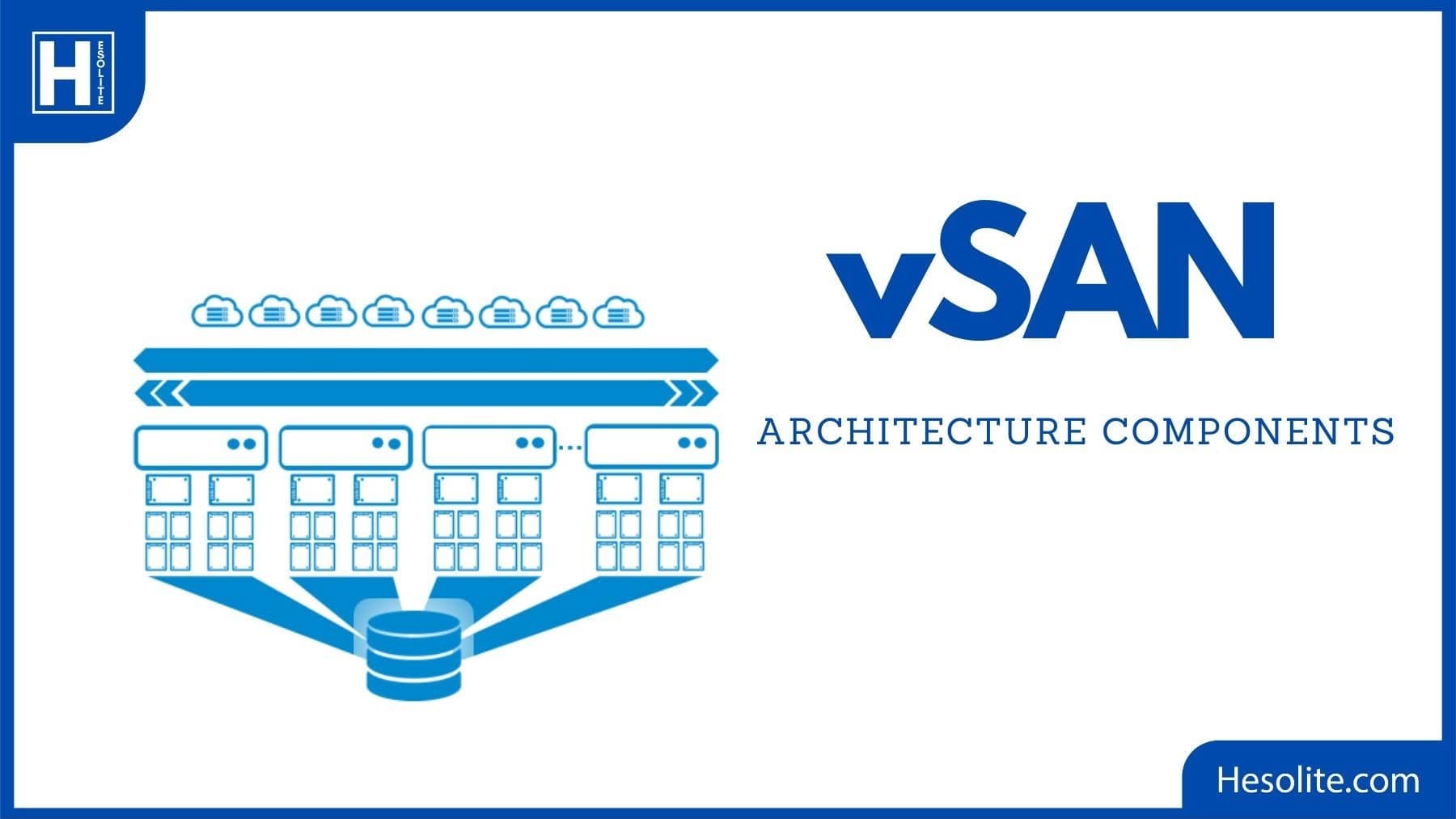Understanding vSAN Architecture Components – How It Works
With the increasing popularity of hyper-converged infrastructure (HCI) architecture, the vSAN deployment model is being heavily adopted by IT service providers and cloud providers. The vSAN product provides a Software Defined Storage solution that allows you to build and maintain a storage network, ensuring fault tolerance and high performance. vSAN gives you a centralized storage management approach and can deliver high system efficiency while keeping your storage budget low. With vSAN, you can build a high-performing environment while keeping your IT staff focused on IT matters without worrying about managing or maintaining storage.
What’s Special About vSAN Data Storage?
A vSAN datastore is a virtual storage resource that provides storage and file services to all your vSAN Virtual Machines (VMs). A Virtual SAN datastore is designed to provide:
- Performance isolation;
- Security;
- Access to a centralized storage pool;
- A high level of fault tolerance and data protection;
- Multiple user management;
- Data protection.
Taking into account all the above, the vSAN datastore can provide performance comparable to a dedicated storage array, and the entire VMware environment can be highly available.
VSAN Architecture Specs
In order to understand how the vSAN architecture works, let us first understand the key elements that make up a storage virtualization solution. The vSAN is a comprehensive software platform that includes the following core components:
Storage
The physical device or block of physical disks stores your virtual machines (VMs) and vMotion information. vSAN connects to the storage subsystem via Fibre Channel or iSCSI, providing high performance. A vSAN cluster is usually a mix of Fibre Channel and iSCSI devices. You can also use VMware virtual Fibre Channel HBA (HBA) or network-attached storage (NAS) to connect to the storage subsystem.
Fibre Channel HBA
A virtual fiber channel interface (HBA) allows you to connect a VM to the Fibre Channel protocol in a host-based storage solution, providing high performance and greater fault tolerance than connecting directly to physical fiber channel devices. vSAN supports external and internal Fibre Channel HBAs to connect to the Fibre Channel switch.
Network
vSAN provides a network switch to link its connected devices, including VMs, HBAs, and storage machines, and routes packets to and from the virtual machines. vSAN supports various network types, including FCoE, iSCSI, and iSER that provide different performance levels, depending on the network type. The choice of network type also impacts the total cost of ownership of a vSAN deployment since different network types require different hardware and software.
vSphere Integrated OpenStack
OpenStack is an open-source cloud platform that provides a standard approach to building, managing, and deploying cloud computing services. It uses a modular approach composed of many components you need to set up and manage. A vSphere Integrated OpenStack stack is a solution you can configure to use VMware technology as the management platform for the various OpenStack components.
In order to build a highly performing vSAN solution, you must prepare and configure all its core components properly.
What vSAN Features Are Available Due to Its Architecture?
vSAN is a highly available and scalable virtual storage solution that allows you to store your data and virtual machines in a securely automated and scalable fashion. vSAN offers all the storage features you may expect, including shared storage, replication, thin provisioning, VM storage snapshots, and many more.
Apart from that, vSAN also provides the following features that allow you to scale your storage more efficiently:
Dynamic provisioning
Dynamic provisioning is a storage feature that allows you to add, expand, and remove storage capacity on a virtual machine basis – from on-demand storage capacity. You can do this by using the thin provisioning features of vSAN or direct-attached storage for the provisioned storage.
Replication
Replication allows you to replicate data from one site to another and automate this process. vSAN provides a virtual replication that is synchronous and asynchronous and a replication that is synchronous only. Depending on the settings you define, you can apply the replication to VMs, virtual machine disks, and data.
Managed VSAN
Managed VSAN is a service provided by VMware which enables you to take charge of your storage infrastructure. You can use Managed VSAN to perform storage tasks, such as adding storage, allocating storage, and deallocating storage. VMware performs all these operations for you, and you pay a fee that depends on your storage device.
vSphere Integrated OpenStack
The vSphere Integrated OpenStack is a solution for deploying vSAN on an OpenStack-based environment. Using vSphere Integrated OpenStack makes deploying, managing, and scaling OpenStack-based environments easier while using a familiar management environment such as vSphere.
Managed VSAN (Cloud On-Premises)
Managed VSAN provides VMware’s management capabilities for an on-premises storage infrastructure, which enables you to automate storage tasks such as adding storage and allocating storage. With Managed VSAN, you pay a monthly subscription fee based on your storage capacity.
vCenter Plugin (Cloud on-Premises)
The vCenter Plugin is a plugin that extends the management capabilities of vSphere with a user interface that you can use to maintain storage and other networking services. You can deploy and manage storage services, including VSAN and Managed VSAN cloud services. Besides that, you can perform other tasks, such as adding storage and allocating storage capacity, from the vCenter plugin user interface. The vCenter Plugin is available as a free plugin.
There is no one and only vSAN infrastructure. It all depends on your needs and requirements. Thus, you can configure a virtual data storage solution in the way that works best for you.


